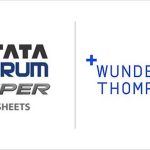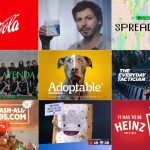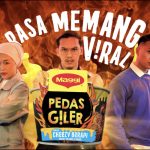The Superbrands organisation describes its list as the “definitive benchmark for brands who’ve set the agenda, outwitted the competition and built enviable reputations”. But Mark Ritson says there is no merit to this at all.
I’ve been trying for more than a decade to point out the utter, utter, utter pointlessness of Superbrands.
I’ve talked about everything from the ridiculous sample to the bonkers methodology and the strangely mercurial results that seem to bounce all over the shop from year to year – almost as if the whole Superbrands system was built on a highly unreliable, random set of data points.
Superbrands’ wonky methodology rates BP as more super than Burberry, and Shell a better brand than John Lewis.

I think the genius of Superbrands is in the list itself. Put anything into a top 20 or a top 10 and journalists from near and far are hypnotically drawn to the results, finding it impossible not to open their laptops and start writing plausible nonsense to explain why a beans manufacturer has beaten a German automotive brand to eighth place in this year’s table.
I give you the top 10 reasons why Superbrands is not super based on their latest 2018 “findings”.
1. Lego is number one
Lego’s emergence as the top brand on this year’s league table caused quite a few headlines. It’s barely a week since the same brand was making the news for an entirely different reason – the brand is actually in trouble.
Barely a week ago the Danish toy company reported its first fall in sales and profits in more than a decade and a growing surplus of stock. Despite Superbrands proclaiming Lego to be the best brand in the UK, the company’s own management team was starkly admitting they were not happy with its current position and that there was much work to do – seven days before Superbrands crowned it the champion of everything. Odd.
2. British Airways dropping out of the list
The big headline for this year’s league table was the dramatic fall of British Airways (BA). Last year the airline was sitting pretty at the top of the Superbrands UK league table. This year it could not even make it into the top 20.
According to a Superbrands’ spokesperson: “British Airways tumbling from top spot to outside the top 20 should be a wake-up call for all brands. In a world where customer expectations have rightfully risen, brands cannot afford to disappoint and need to continually deliver to retain their valuable reputations.”
No, that’s not it. BA was crap on customer satisfaction long before bedbugs and IT explosions took their toll (see below) so I suspect the real reason it has dropped inexplicably from top to completely out of the list is epistemological not endogenous to BA. (The research method is balls, in layman’s terms.)
3. British Airways being top for the past four years
And before this looks like a column defending BA (it’s not) let’s make it clear that, until its “wake-up call” this year, it had been the most ‘super’ of brands for the past four years. That’s equally ridiculous, given BA has regularly been among the least satisfying airlines in the world according to other, less ‘super’, research.
In 2017, for example, consumer organisation Which? ranked BA as 18th out of 20 short haul airlines – behind such aerial behemoths as Air Malta and Flybe – and only 15th out of 17 for long haul flying. Given numbers 16 and 17 were American and United Airlines, which specialise in brand destruction and customer alienation, this is the equivalent to pretty much coming dead last.
For many years Skytrax has rated BA as mid to low in terms of satisfaction and it has consistently failed to get anywhere near the top 10 airlines ratings, yet Superbrands crowned BA best of the best for four years running – not just of airlines (a category every other poll has BA losing hands down) but of all brands. Super odd.
4. Coke is…improving. Wait, what?
I bet they were rubbing their eyes in disbelief down in Atlanta this week. With Coke’s brand equity slumping, its product invariably on a permanent death spiral of sales promotions and stupid product innovation, there is a clear lack of good news.
Well here it is: Superbrands thinks Coke is much more super this year versus last. Despite widespread acceptance that Coke is in deep marketing shit, Superbrands has moved it up five places from last year. What a result! Magic.
5. Gillette
It’s a similar story for Gillette. Last year it was only the fifth most super brand, this year it is up to second place. Who would have thought it?
Well, not me and certainly not Gillette. The razor brand faces significant competitive threats for the first time in two decades from Unilever and a host of smaller startup brands. It has been forced to cut prices by as much as 20% in a forlorn attempt to stall the decline.
Gillette is “bleeding market share”, according to the Wall Street Journal. No it’s not, argues Superbrands, it’s super! Even more super than last year and nearly as super as Lego and Coke. Which are also more super this year than last. Go figure.
6. The mysterious case of the declining Rolex
Last year, Rolex was the third most super brand in the UK. This year it drops out of the top 10 and comes in at 12th behind Cadbury (clearly a much more super brand) and Andrex (also more super). This is a particularly inexplicable shift because, and there is no polite way to put this, Rolex is the most boringly lovely brand ever invented.
Its watches don’t change. Its endorsers don’t change. Its sponsorships don’t change. It’s the epitome of Swiss sophisticated stability. It just sits there being superior and making enormous amounts of cash. If Superbrands ranks Rolex as third, it has to stay third. That is just the way it goes. It’s Rolex. It doesn’t go down, or up. It just is.
7. Where’s Cornflakes?
Kellogg’s has just completely disappeared from the list. It was in the top 10 last year but now, for reasons known only to God and Superbrands, it has completely disappeared from the list. Coke had a great year and went up five spots, but Kellogg’s is totally fucked. Are you sensing a pattern yet? Me neither.
8. Amazon is apparently not massive
It’s the brand on everyone’s lips. It leads voice technology; it’s bigger than the Vatican; for every tenner spent online in this country, four quid goes its way. Hell, even Google is soiling its multicoloured knickers at the thought of competing with it.
Amazon is everywhere, except on the Superbrands list. It did not make the top 20 this year. Heathrow did. Kleenex did. But Amazon missed the cut. It was ranked last year, squeezing into the list at number 19, but it dropped off in 2018 and given what a crap year it has been having that is hardly surprising. Hang on, what?
9. BP and Shell
Both big oil brands made it. Obvious really, because nothing says brand strength in 2018 more than giant, commodity-producing corporations that are widely disliked by a vast swathe of the population. Sigwatch has been monitoring the most hated brands in the world for many years and both BP and Shell regularly feature at the very top of the list.
According to a delighted Shell spokesperson, the company’s inclusion in the top 20 rankings is “a testament to the power of the Shell brand” and its “customer-facing organisations that have helped to build such a solid reputation”. Perhaps. Or it could be a function of a wonky methodology that rates BP as more super than Burberry, and Shell a better brand than John Lewis.
10. Everything else
I’ve run out of bullet points, but with so many more weird things to draw your attention to in this year’s list, let me just reiterate that Shell and Heathrow are in the Superbrands Consumer Top 20 and then remind you of some of the brands that did not make it: Google, Mars, Pret A Manger, the BBC, Burberry, L’Oréal, McDonald’s, The Guardian, Zara.
Again, one more for the road: BP is more of a super brand than Toyota and Häagen-Dazs is more super than Amazon. Thank you Superbrands.
Right, I am done. I’ve tried my best but it will make not one jot of difference. In almost exactly 12 months, the flying method-monkeys of Superbrands will drop their magic balls of fate into the 20 random receptacles of 2019 and the whole process will begin again.
Journos will write about the inexplicable shifts, Superbrands will point out the “important lessons” for other brands to heed and I will lift my weary head from the table I have been banging it against and try, once more, to bring about their downfall.
source: http://www.marketingweek.com
MARKETING Magazine is not responsible for the content of external sites.









